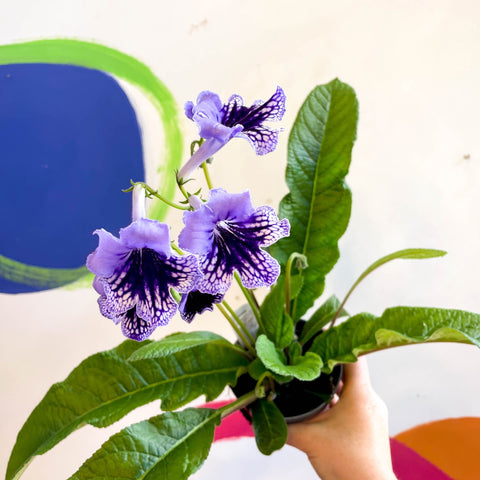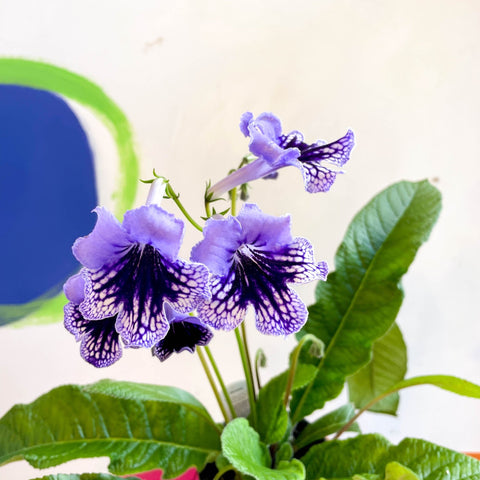Menu









Scientific Name
Streptocarpus ionantha (twisted fruit with violet flower)
Common Name
African Violet, Saintpaulia, Kenya Violet, Usambra Violet, Cape Primrose
Origin
Native to Eastern and Southwestern Tanzania
Description
Despite the name, the African Violet is not a violet- but it will produce flowers in a rainbow of colours! Choose this plant for a bright, contrasting display with lush green foliage and bright blooms. Flowering in late spring will be more likely if your Streptocarpus has had a nice winter rest, or dormancy period, with lower temperatures and less water. Deadheading the spent flowers can encourage longer bloom times, too, and even when the plant is not flowering you'll have its gorgeous broad green leaves to admire, which will keep growing, albeit more slowly, while the plant is dormant.
Light
In Spring and Summer, provide bright but indiret light; to help with its dormancy in autumn and winter, add a couple of hours of direct sunlight per day.
Water
Streptocarpus love consistency with soil moisture. Water thoroughly once the top third of the soil dries and let excess water drain out. Reduce watering in autumn and winter so as not to overdo it!
Humidity
Likes fairly humid air and will benefit from a pebble tray. If the tips of the leaves start to brown and curl, this is a sign that the air is a little dry! Hose down the leaves every few weeks to stop dust gathering.
Soil
Use a well-draining houseplant soil to ensure its roots aren't too soggy. A mix with added sand or coir would work well! Repot every 3-4 years in spring when not in bloom as the plant grows.
Food
Feed every couple of weeks in the growing season, reduce to every month in autumn and winter. When in bloom, use a feed high in potassium to prolong blooming.
Temperature
Average household temperatures of about 14-20°C are ideal- make sure it doesn't drop far below 12°C in winter.
Pet-safe
Yes, but too much nibbling won't be good for pets, small humans or the plant!
Sprouts Top Tips
Streptocarpi go through a dormancy period in autumn and winter; at these times be sure to fertilise and water less as the plant is growing less. It would also appreciate ambient temperatures being lower, at about 12°C.


A lifestyle, gift, and plant shop, based in Bristol. Trying to make a difference to our customers, employees, suppliers, and community by following the three P’s of business; people, planet, profit; in that order.
Find out more

Sprouts of Bristol
2 Kingsdown Parade
Bristol
BS6 5UD
Store Hours
Open everyday 10am - 6pm
Apart from bank holidays

10am - 6pm
Lovely little plant beautifully packaged. Arrived in perfect condition at a great price. Thank you so much :)
I bought a 'medium' and what arrived was a very generously sized plant which I was very happy with . Plant was in good condition, and was very carefully wrapped for shipping.
What a treat—a box full of surprise plants, including two I haven't grown before. All except one of the five received were far from wonky really, and I hope the struggler will catch up with the others with a bit of tlc! It's a great way to shop for indoor plants and loads of fun unpacking. The handwritten note is a brilliant guide on what they each need. I definitely recommend it, and I will likely be back to try the bigger version!!
Very happy! Exactly as ordered.
